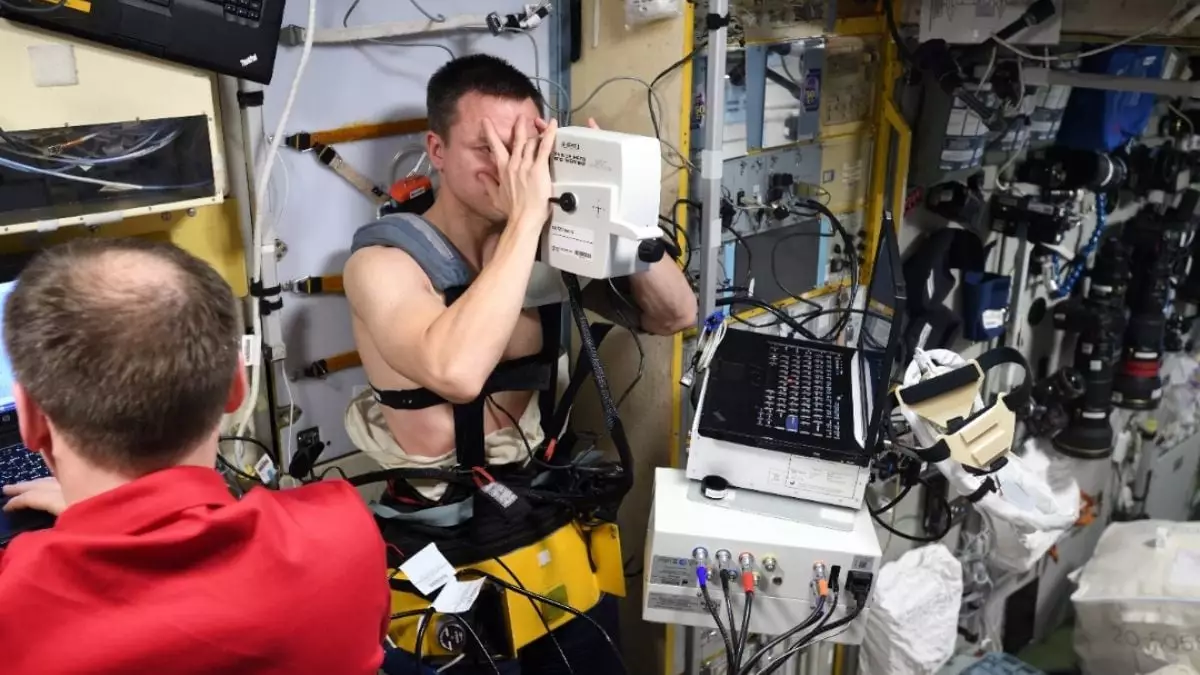Recent findings have illuminated a pressing issue for the future of space exploration: the vision anomalies faced by astronauts on the International Space Station (ISS). Remarkably, a staggering 70 percent of astronauts who have spent significant time—between six to twelve months—in microgravity have reported alterations in their vision. This phenomenon, known as spaceflight-associated neuro-ocular syndrome (SANS), raises critical concerns as humanity sets its sights on extended missions beyond Low Earth Orbit (LEO).
The symptoms of SANS include a troubling array of vision-related issues such as swelling of the optic nerve, a flattening at the back of the eye, and general vision impairment. Researchers believe these changes are primarily linked to fluid redistribution in the absence of gravity, leading to increased pressure on ocular structures. Although many astronauts recover their eyesight upon returning to Earth, the long-term ramifications of such alterations remain largely uncertain. As space agencies prepare for potential journeys to Mars and beyond, this uncertainty looms as a significant barrier.
Scientific Investigations
A pivotal study that sheds light on this issue was conducted by Santiago Costantino and his team at the Université de Montréal. They meticulously investigated the ocular health of 13 astronauts from various disciplines—including participants from the United States, Europe, Japan, and Canada—who had spent considerable durations aboard the ISS. The research specifically examined changes in ocular rigidity, intraocular pressure, and ocular pulse amplitude both before and after the astronauts’ missions to space.
The results were alarming: there was a 33 percent decrease in ocular rigidity, an 11 percent drop in intraocular pressure, and a 25 percent reduction in ocular pulse amplitude post-flight. Additionally, certain astronauts exhibited increased choroidal thickness, presenting further concerns about the health of their eyesight. The parallels drawn with similar symptoms experienced by Russian cosmonauts aboard the Mir space station demonstrate that this is not a newly emerging phenomenon but rather an ongoing challenge since the early 2000s.
Countermeasures and Future Directions
In response to these unsettling findings, space agencies have begun to pursue various countermeasures to protect astronauts’ ocular health. Among the strategies being researched are negative pressure devices, pharmaceuticals, and tailored nutritional regimens aimed at maintaining appropriate intraocular conditions during prolonged exposure to microgravity.
Additionally, ongoing research is dedicated to identifying astronauts who are at higher risk for developing severe ocular issues. Notably, Costantino has highlighted the potential of changes in the eye’s mechanical properties as useful biomarkers for early detection of SANS. This could prove instrumental in instituting timely interventions and safeguarding the visual health of astronauts on future missions.
As we pave the way for deeper space exploration, the challenges posed by SANS must not be underestimated. Protecting astronaut vision is of paramount importance, particularly in the context of ambitious goals such as manned missions to Mars. Space agencies worldwide must prioritize this issue, ensuring that solutions are developed and implemented effectively to maintain the health and safety of those venturing into the cosmic frontier.

